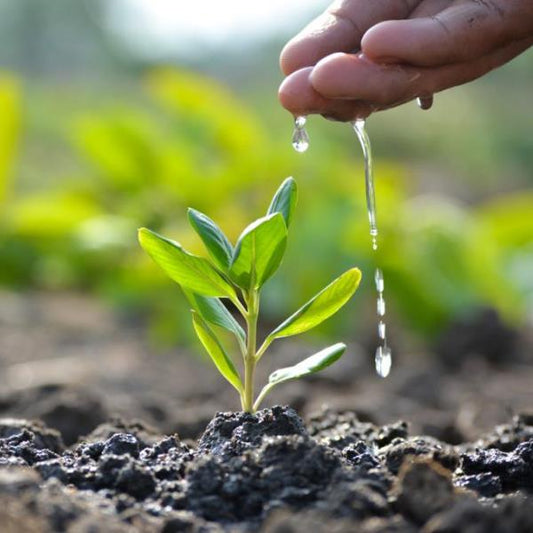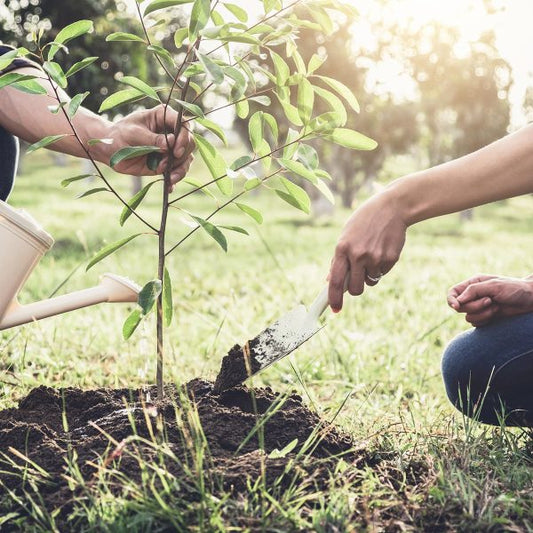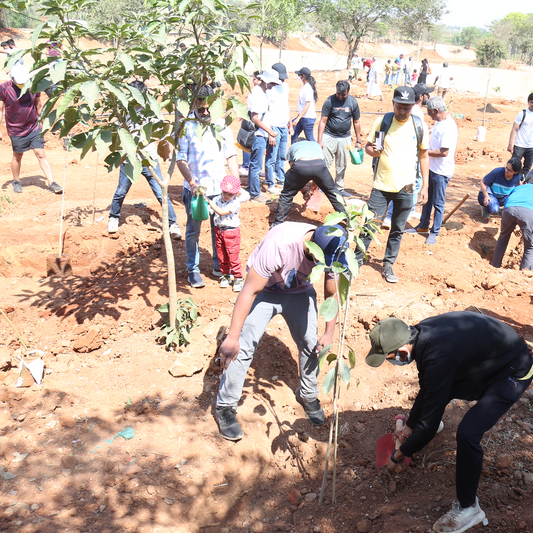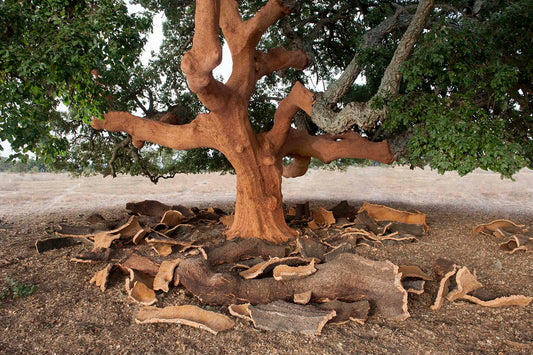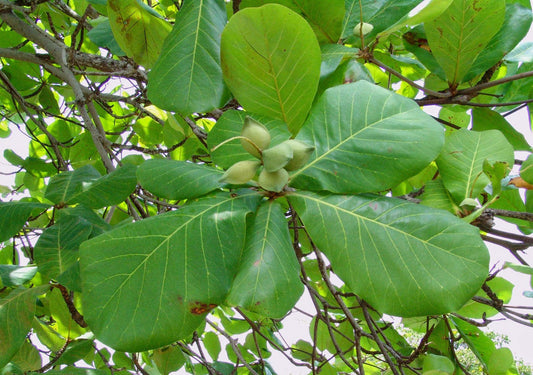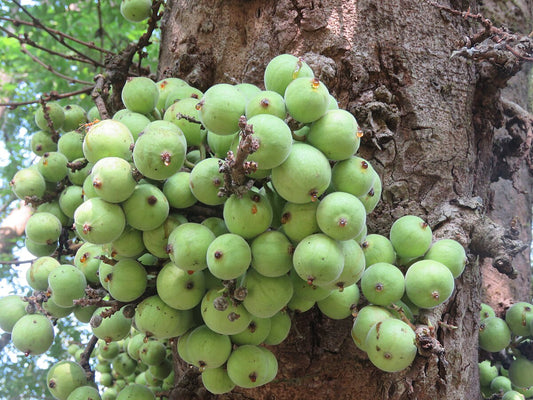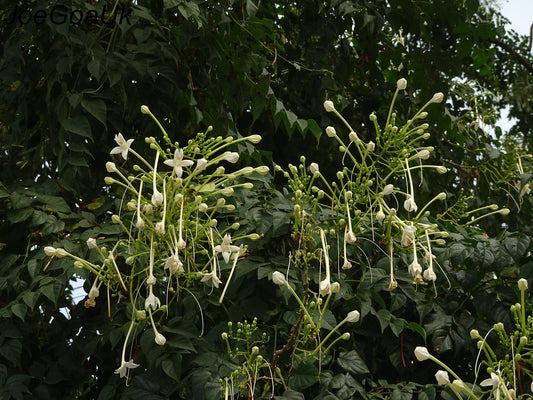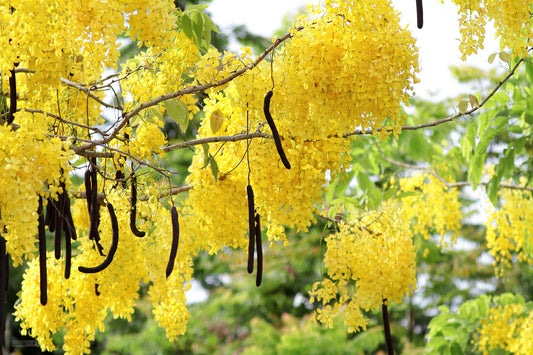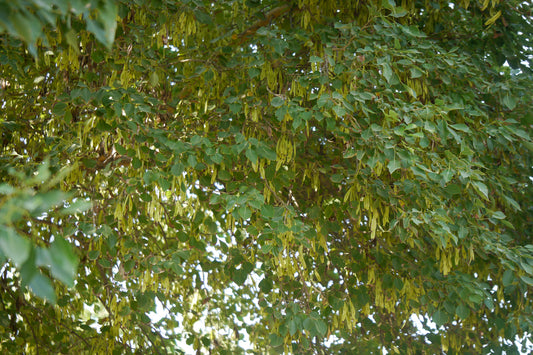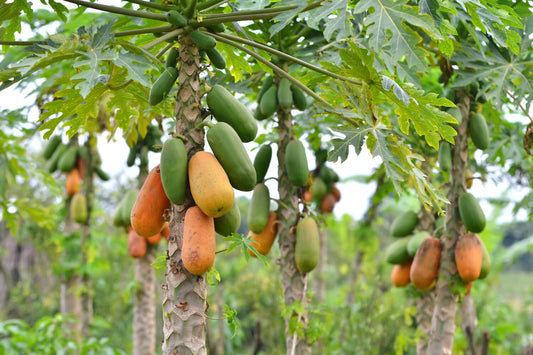

In the lush landscapes of tropical regions, the Rain Tree, scientifically known as Samanea saman, stands as a canopy guardian, symbolizing tropical splendor and cultural heritage. This majestic tree, adorned with a wide canopy of fern-like leaves, not only graces the rainforests but als Read more
Trending
Trees for Corporates
Rain Tree
You may also like
Corporate Plantations
Rain Tree Overview
Explore the captivating characteristics and ecological significance of the Rain Tree, Samanea saman, admired for its graceful canopy, fragrant flowers, and cultural importance.
Botanical Profile of Rain Tree
Delve into the botanical intricacies of the Rain Tree, including its foliage, flowers, fruits, and growth habits. Learn about its taxonomic classification, morphology, and distribution across tropical regions worldwide.
Distribution of Rain Tree
Learn about the natural distribution of the Rain Tree across tropical regions of the Americas, Africa, Asia, and the Pacific Islands. Explore its adaptation to diverse climates, from humid rainforests to dry savannas.
Ecological Role of Rain Tree
Discover the ecological significance of the Rain Tree in supporting biodiversity, soil health, and ecosystem resilience. Learn about its role as a shade tree, nitrogen fixer, and habitat provider for wildlife.
Cultural Importance of Rain Tree
Explore the cultural symbolism and spiritual significance of the Rain Tree in indigenous cultures, folklore, and traditional medicine. Learn about its association with rainmaking rituals, fertility symbolism, and sacred groves.
Medicinal Properties of Rain Tree
Delve into the medicinal properties attributed to the Rain Tree in traditional medicine systems such as Ayurveda, Traditional Chinese Medicine, and Amazonian folk medicine. Learn about its therapeutic uses for treating various ailments, including gastrointestinal disorders, respiratory infections, and skin conditions.
Culinary Uses of Rain Tree
Learn about the culinary uses of Rain Tree pods, seeds, and flowers in regional cuisines. Explore traditional recipes for making beverages, snacks, and condiments using the nutritious and flavorful parts of the tree.
Traditional Harvesting and Processing
Gain insights into traditional harvesting and processing methods for Rain Tree products. Learn about sustainable harvesting practices, post-harvest handling techniques, and value-added processing for food, medicine, and crafts.
Agroforestry and Conservation Practices
Explore the role of Rain Tree cultivation in agroforestry systems, reforestation projects, and biodiversity conservation efforts. Discover its potential for soil improvement, erosion control, and carbon sequestration in degraded landscapes.
Cultivation Techniques and Varieties
Learn about cultivation techniques and improved varieties of Rain Tree for commercial production. Explore agronomic practices, propagation methods, and pest management strategies for maximizing yield and quality.
Value-Added Products and Industries
Discover value-added products and industries associated with Rain Tree cultivation. Explore opportunities for timber production, herbal medicine manufacturing, and handicrafts using Rain Tree wood, bark, and extracts.
Market Trends and Economic Opportunities
Gain insights into market trends and economic opportunities in the Rain Tree industry. Explore domestic and international markets for Rain Tree products, driving demand and investment in cultivation and processing.
Sustainable Management Practices
Learn about sustainable management practices for Rain Tree plantations and wild populations. Explore approaches for biodiversity conservation, habitat restoration, and community engagement in sustainable forestry.
Research and Innovation
Discover research initiatives and technological innovations aimed at enhancing Rain Tree cultivation, product development, and market access. Explore collaborations between researchers, farmers, and entrepreneurs to advance Rain Tree research and innovation.
Climate Resilience and Adaptation
Explore the climate resilience and adaptation strategies of the Rain Tree in response to changing environmental conditions. Learn about its tolerance to drought, flooding, and extreme temperatures, contributing to landscape resilience in vulnerable areas.
Biodiversity Conservation
Understand the role of Rain Tree cultivation in promoting biodiversity conservation and habitat restoration efforts. Explore its potential for enhancing wildlife habitat, restoring degraded landscapes, and conserving native flora and fauna.
Community Empowerment and Livelihoods
Learn about community empowerment and livelihood opportunities associated with Rain Tree cultivation and value addition. Explore initiatives for sustainable livelihoods, rural entrepreneurship, and inclusive value chains.
Policy Support and Regulatory Frameworks
Gain insights into policy support and regulatory frameworks for Rain Tree cultivation and trade. Explore government initiatives, certification programs, and quality standards promoting sustainable practices and market access.
Future Prospects and Challenges
Delve into the future prospects and challenges facing Rain Tree cultivation and industry development. Explore opportunities for innovation, market diversification, and sustainable growth, as well as risks related to climate change, pests, and market dynamics.
Education and Awareness Initiatives
Learn about education and awareness initiatives aimed at promoting the conservation and sustainable use of Rain Tree resources. Explore outreach programs, educational materials, and public campaigns fostering environmental stewardship and community engagement.
FAQ
What is a Rain tree?
The Rain tree, scientifically known as Samanea saman, is a tropical tree species native to Central and South America. Renowned for its wide, umbrella-like canopy and unique foliage, the Rain tree holds cultural, ecological, and ornamental significance in regions with tropical and subtropical climates.
Where are Rain trees commonly found?
Rain trees are commonly found in tropical and subtropical regions of Central and South America, including countries such as Mexico, Brazil, Colombia, and Venezuela. They thrive in diverse habitats, including rainforests, savannas, and riparian zones, where they play important ecological roles and provide valuable resources for humans and wildlife.
What are the characteristics of Rain trees?
Rain trees are characterized by their spreading canopy, which forms a broad, umbrella-like shape, and their finely pinnate leaves that fold up at night or during periods of rain. They produce showy pink or white flowers arranged in spherical clusters and flat, brown pods containing seeds.
How tall do Rain trees grow?
Rain trees can grow to impressive heights, reaching 15-25 meters (49-82 feet) or more in favorable growing conditions. They have a fast growth rate, particularly in their early years, and can develop a wide canopy that provides ample shade and habitat for wildlife.
What is the scientific name of the Rain tree?
The scientific name of the Rain tree is Samanea saman, formerly known as Albizia saman, belonging to the family Fabaceae. The genus name "Samanea" is derived from the Latin word for "under the sun," referring to the shady canopy created by the tree, while the species epithet "saman" is derived from the indigenous Taino name for the tree.
When do Rain trees bloom?
Rain trees typically bloom in the spring or early summer, producing clusters of fragrant, pink or white flowers that attract pollinators such as bees, butterflies, and hummingbirds. The flowering period may vary slightly depending on the local climate conditions and environmental factors.
How to care for Rain trees?
To care for Rain trees, plant them in well-drained soil in a location with full sunlight or partial shade, depending on the species and local climate conditions. Provide regular watering, especially during the dry season or periods of prolonged drought, and fertilize annually with balanced fertilizer to promote healthy growth and flowering.
What are the benefits of planting Rain trees?
Planting Rain trees offers several benefits, including providing shade, beauty, and habitat for wildlife in parks, gardens, and urban landscapes, improving air quality through carbon sequestration and oxygen production, and enriching soil health through nitrogen fixation and organic matter accumulation.
Are Rain trees suitable for urban environments?
Rain trees are well-suited for urban environments, where they provide shade, aesthetic value, and ecological benefits in parks, streetscapes, and green spaces. They are often planted as street trees or in public parks, where their resilience and adaptability to urban conditions are appreciated.
How to propagate Rain trees?
Rain trees can be propagated from seeds or cuttings. Collect mature seeds from the tree during the fruiting season and sow them in containers filled with well-drained potting mix. Alternatively, take semi-hardwood cuttings from healthy, mature trees and root them in a rooting hormone solution.
What are the common pests and diseases affecting Rain trees?
Common pests affecting Rain trees include aphids, caterpillars, and leaf-mining insects, while diseases such as powdery mildew, leaf spot, and root rot can also occur. Proper sanitation, pruning, and integrated pest management practices can help prevent and manage pest and disease problems.
Can Rain trees tolerate drought?
Rain trees have moderate drought tolerance once established but benefit from regular watering, especially during the establishment phase and periods of prolonged drought or dry spells. Mulching around the base of the tree helps retain soil moisture and regulate soil temperature, promoting healthy growth and resilience.
How long does it take for a Rain tree to mature?
It typically takes several years for a Rain tree to reach full maturity and attain its maximum height and canopy spread. However, they have a relatively fast growth rate compared to some other tree species and can reach mature size within 15-20 years under favorable growing conditions.
Are Rain trees deciduous or evergreen?
Rain trees are deciduous or semi-evergreen, depending on the species and local climate conditions. In some regions with distinct dry and wet seasons, they may shed their leaves during the dry season and regrow them when moisture levels increase, while in other regions, they may retain their leaves year-round.
Can Rain trees be grown in pots?
While Rain trees can be grown in pots when they are young, they are not well-suited for long-term container cultivation due to their large size and extensive root system. They require ample space for root development and are best planted directly in the ground in a spacious, well-drained location.
What is the significance of Rain trees in landscaping?
Rain trees are prized in landscaping for their ornamental value, shade-providing canopy, and ecological benefits. They are often used as specimen trees, shade trees, or focal points in gardens, parks, and landscapes, where their graceful form and attractive foliage add beauty and functionality to the design.
Are Rain trees invasive?
Rain trees are not considered invasive in most regions, as they are native to Central and South America and have been cultivated for centuries for their shade, timber, and ornamental value. However, they may spread and naturalize in favorable growing conditions, particularly in tropical and subtropical habitats.
How do you prune a Rain tree?
Prune Rain trees as needed to remove dead, damaged, or overgrown branches and shape the canopy for optimal growth and appearance. Use clean, sharp pruning tools and make cuts just outside the branch collar to promote rapid healing and minimize the risk of infection.
What is the lifespan of a Rain tree?
The lifespan of a Rain tree can vary depending on species, growing conditions, and management practices. In optimal conditions, Rain trees can live for several decades to over a century, with some individual trees reaching ages of 50 years or more.
Are Rain trees protected species?
Rain trees are not listed as protected species in most regions, but they may be subject to conservation efforts and regulations aimed at preserving their ecological importance and cultural significance. Sustainable management practices and habitat preservation initiatives help ensure the continued existence of Rain trees and their valuable contributions to ecosystems and human well-being.
Most Popular
Connect with us
-
👥 Corporates
If you are looking for:
- 🌲 Tree Plantation Events
- 📊 CSR Projects
📧 corporate@growbilliontrees.com
📞 +91 9699723523
💬 WhatsApp (Only): +91 9370599291
🕒 Mon - Sat | 10am - 7pm IST
-
🧩 Tree Plantation NGOs
If you are looking for:
- 💰 Financial Assistance
- 🤝 Operational Support
📧 support@growbilliontrees.com
📞 +91 9699723523
💬 WhatsApp (Only): +91 9370599291
🕒 Mon - Sat | 10am - 7pm IST
-
🌼 Individuals
If you are looking for:
- 👥 Group Tree Plantation Drive
- 🌳 Bulk Tree Plantation
📞 +91 9699723523
💬 WhatsApp (Only): +91 9370599291
🕒 Mon - Sat | 10am - 7pm IST



